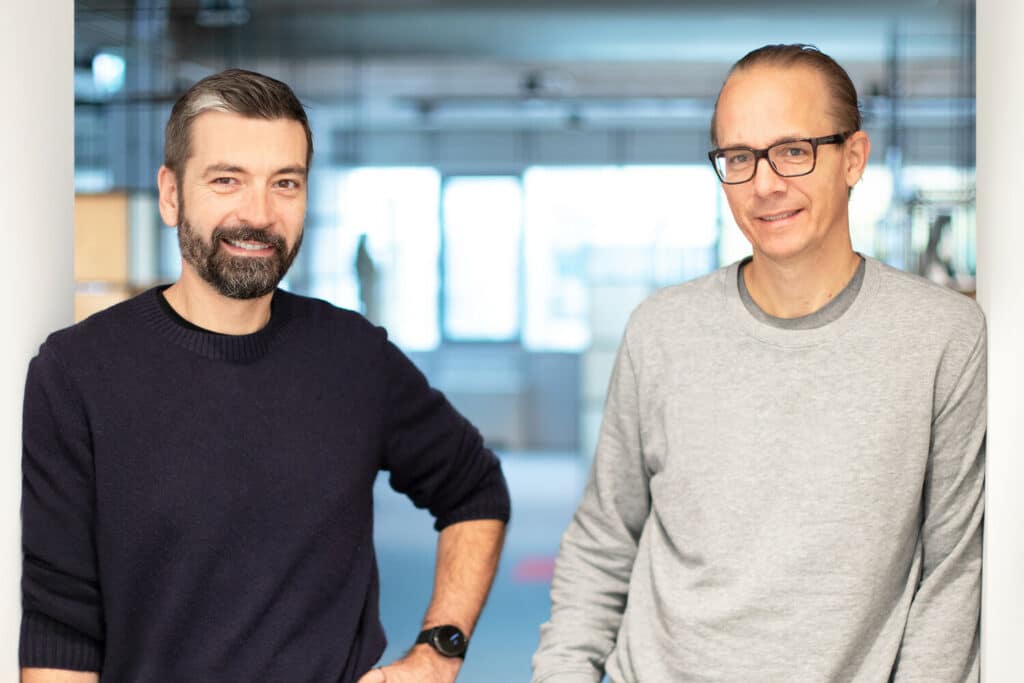And suddenly it went woom
Cycling can be child's play. If the saddle is properly adjusted, the grips fit little hands and the bike is not too heavy. With woom, Christian Bezdeka and Marcus Ihlenfeld developed children's bikes that take the needs of people from 1.5 to 14 years into account.

Photos ©woom
"Innovation in the bike sector focuses exclusively on the segment for elite sport," Christian Bezdeka recalls the initial situation. "The next step is to transfer technical innovations to high-priced bikes." A few years later, the innovations would also reach all-round bikes. Children's bicycles remained largely exempt from innovations.
The best children's bikes in the world
It stayed that way until 2013. Then it literally went woom. At the time, industrial designer Christian Bezdeka worked for international companies and developed products for children and the bicycle industry, among others. By chance, he met Marcus Ihlenfeld, a congenial partner, as it turned out, because he brought management experience from the automotive industry with him. "I certainly wouldn't have made it on my own," Bezdeka emphasises the importance of a functioning team in which competences complement and reinforce each other. The chemistry was also right. Both were "bike crazy", looking for suitable bikes for their children and willing to invest time and know-how in a new generation of children's bikes. Strictly speaking, they were to be the best children's bicycles. The fact that they are called woom is thanks to the son of the company founder, who condensed his enthusiasm for wind and speed into one word.
"When our children were in bed, we tinkered with the prototype at night," Bezdeka says. He also recommends the motto "Build prototype fast" to all other start-ups: "It pays to launch a trial balloon on a small scale, learn and see that the learning curve is steep."
From Klosterneuburg to the whole world
The first 50 bikes, which were created in a garage in Vienna, immediately sold like hot cakes. Banks and the bicycle industry were sceptical and answered the woom founders' enquiries negatively. But the aws impulse XL funding made it possible to finance the next step. Bezdeka and Ihlenfeld moved to Klosterneuburg and built 500 units. They were also sold out in no time and the enthusiastic parents continued to tell the story of the high-quality children's bike.
woom picked up speed. The recommendation marketing worked, production grew. In the beginning, the bikes were sold exclusively through the online shop, but as more and more customers asked for the high-quality children's bikes, the stationary trade followed suit. In Austria, in Europe, in the USA. In the meantime, more than 500,000 woom bikes are on the road worldwide and the company continues to grow.
Asked about the recipe for success, Christian Bezdeka answers: "A good bicycle is a composition of many good details. We give people good arguments so that they are willing to spend more money on high quality." Good details. These are, for example, green and black coloured brake levers, so that even children who cannot yet distinguish between left and right press the brake in time. Or the low weight, which makes cycling easier for children and reduces the burden on parents. And many other subtleties that are optimally adapted to the different needs, arm and leg lengths of people between one and a half and 14 years of age and make cycling child's play.
Modern classic
The bikes, which are currently manufactured in Cambodia, Taiwan, Bangladesh and Poland, are now available as all-round models for city and mountain tours. "Seven versions have been developed so far, but from the outside the bike has remained the same," Christian Bezdeka describes a characteristic of the brand. Instead of pink and short-term trends, the design of the bikes and accessories focuses on timeless aesthetics, rich, cheerful colours and durability. This is also evident in the upCycling membership: anyone who returns a bike that has become too small and buys a bigger one gets 40 percent of the original purchase price back. And a look at online platforms shows that used woom bikes are traded almost at the new price because materials and components correspond to the idea of "indestructible".
"We have developed something like a modern classic," Christian Bezdeka sums up the work of a decade. He and co-founder Marcus Ihlenfeld have recently retired from the operational business and entrusted the management to a new generation. "At a higher altitude", they are still there for the woom team and are busy with plans for the further development of the brand.